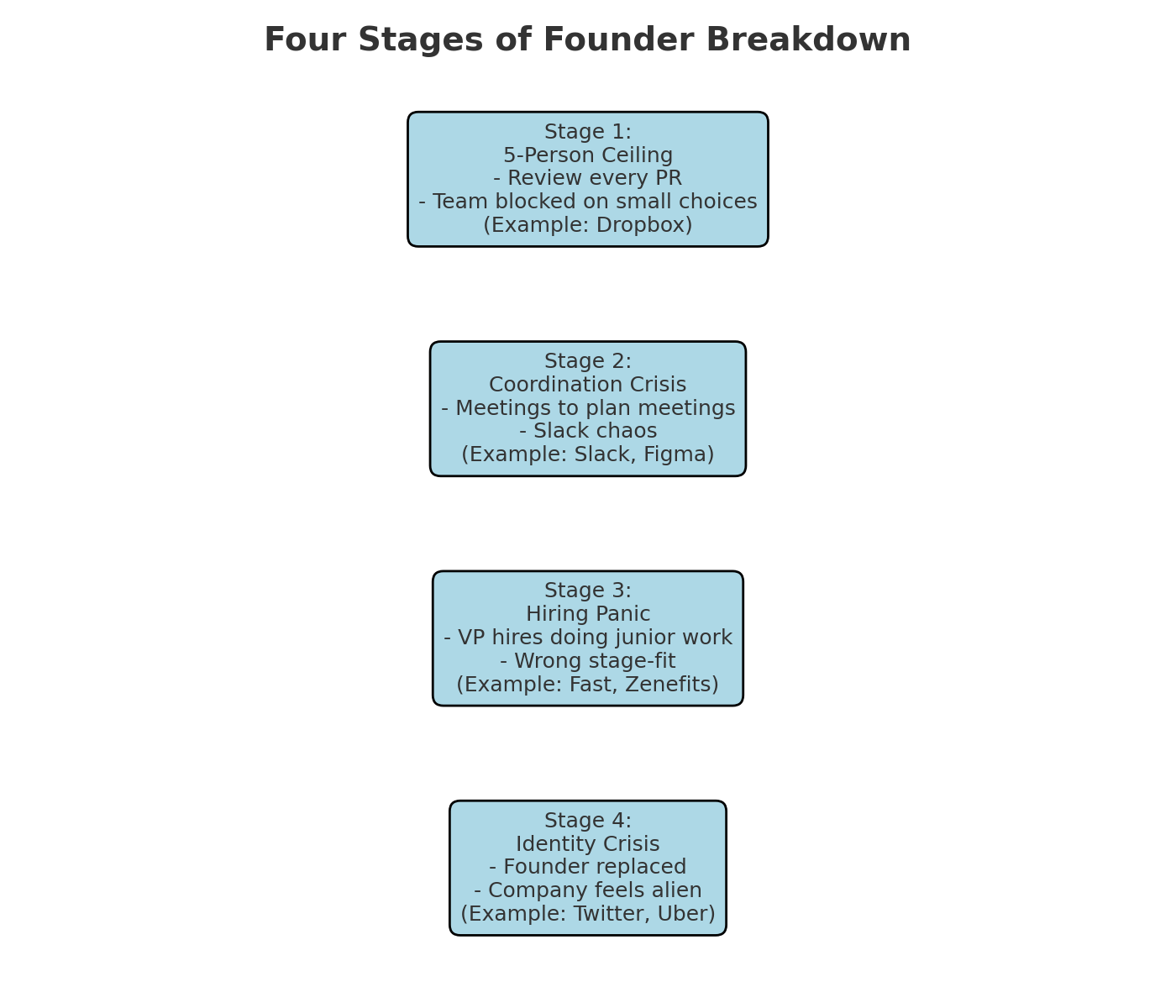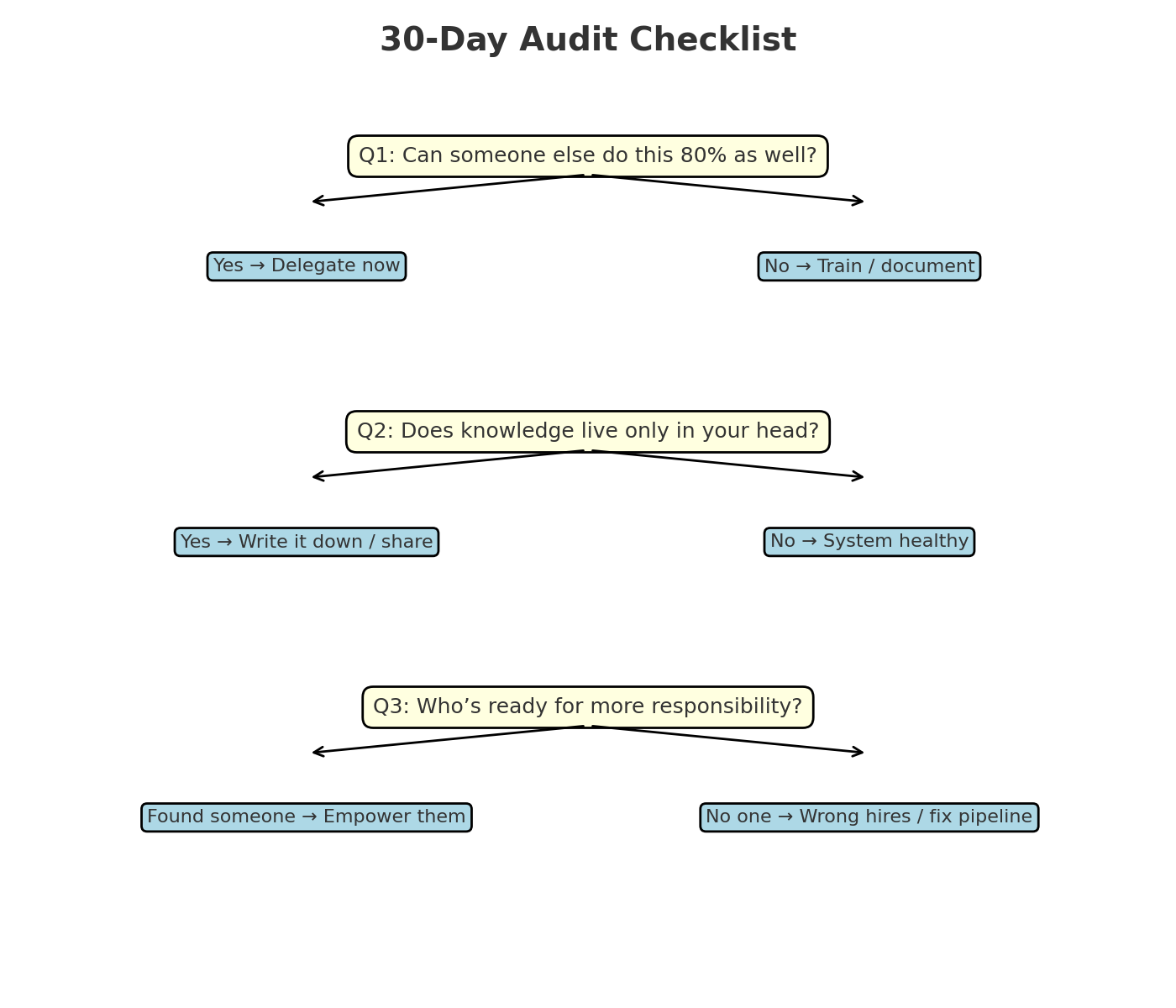The 6-Month Rule: Why Your Startup Skills Have an Expiration Date
A rough guide to not becoming your own worst enemy
Before we begin... a big thank you to this week's sponsor.
Whether you’re dealing with grief, want to improve your coping strategies, or you’re just feeling down—therapy is for you. BetterHelp makes starting therapy easy, and it’s 100% online.
Here’s how it works:
Take our questionnaire and get matched with a therapist.
Schedule a time to meet and communicate on your terms.
Reach out to your therapist anytime, from anywhere.
Get Started with 25% off Your First Month
Your GitHub commits are perfect. Your code reviews are thorough. Your architecture decisions are sound. Your startup is dying anyway.
Here's what nobody tells you: the skills that made you dangerous as an engineer expire fast when you're running a company. And most technical founders are about 12 months behind where they need to be.
The Brutal Math of Scaling
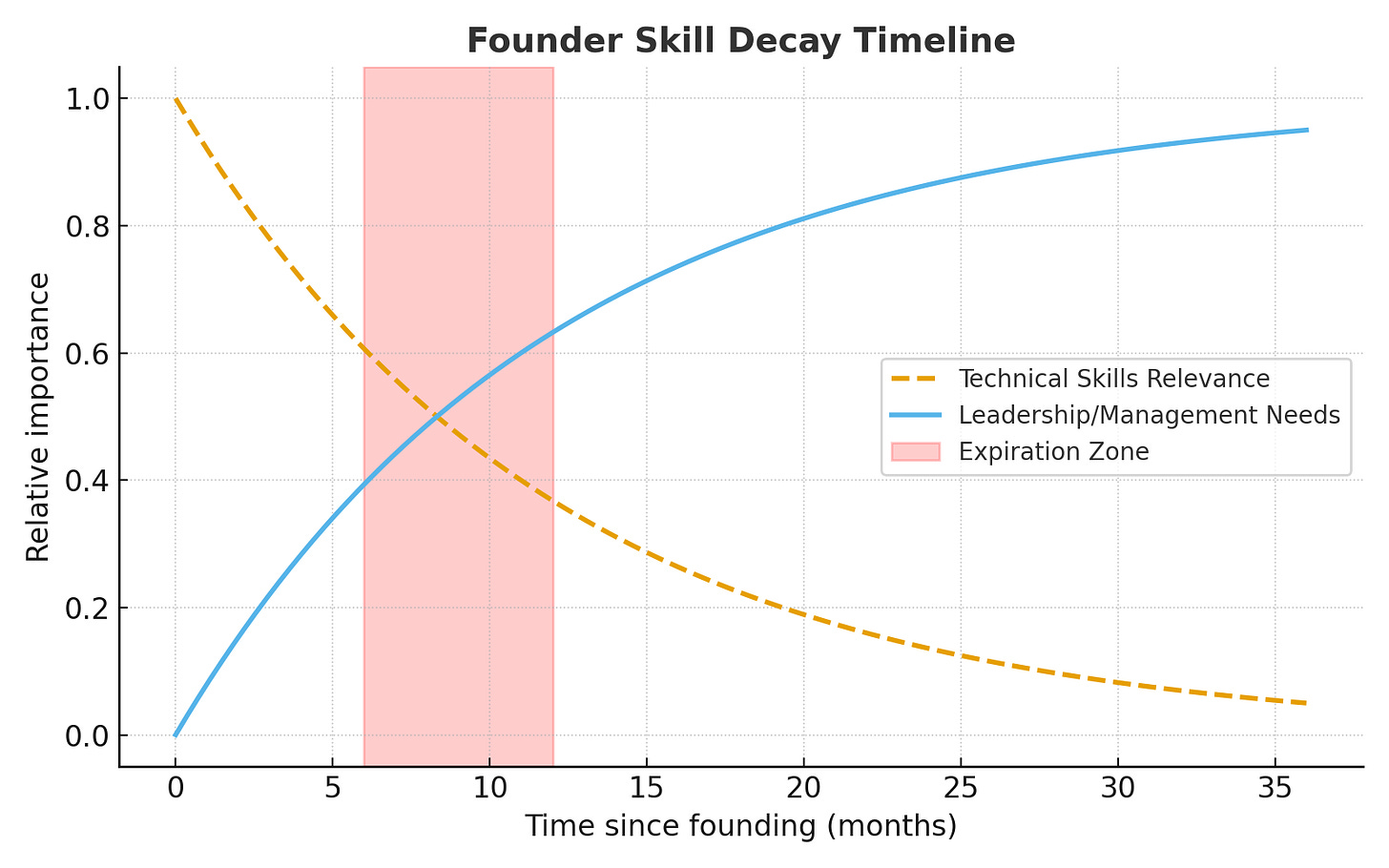
I've been tracking this pattern across dozens of startups, and the 2025 numbers are brutal:
Most studies say 70–90% of startups fail. Harvard’s Tom Eisenmann breaks it down: management mistakes and leadership gaps are in the top reasons founders cite when post-morteming.
“Founder’s syndrome” is a known pattern in nonprofits and startups: centralized control, bottlenecked decision making, and eventual organizational collapse.
Richard Branson blunt: “If you really want to grow as an entrepreneur, you’ve got to learn to delegate.”
Bill Gates: “The best leaders are the ones who know how to delegate.”
Harvard Business Review notes that startups fail when founders can’t transition from operator to orchestrator—exactly the gap you describe.
Founder dependence isn't just operational—it's "a risk multiplier that will kill any operator's chance of exiting."
But founders keep fixing the wrong shit. You'll spend 3 weeks perfecting your deployment pipeline while your best engineer quits because they don't know what to work on. You'll architect for 10M users while losing customers because nobody answered their support ticket.
The Stages Where Technical Founders Break
Stage 1: The 5-Person Ceiling (Months 0-8)
You can still know everyone's work. You can still review every PR. You can still be in every important conversation.
What breaks you here:
You're still the person everyone asks about everything.
Your team sits around waiting for you to decide if the button should be blue.
You haven't written job descriptions because "I'll know the right person when I meet them."
Examples:
Drew Houston (Dropbox) admitted he was reviewing every PR and running every decision until ~10 employees: “Eventually you realize you’re slowing everyone down.”
Brian Chesky (Airbnb) personally took photos of hosts’ apartments early on until ops staff were hired .
Patrick Collison (Stripe) said: “For a while it was literally me answering the phone when a developer called.”
Stage 2: The Coordination Crisis (Months 8-18)
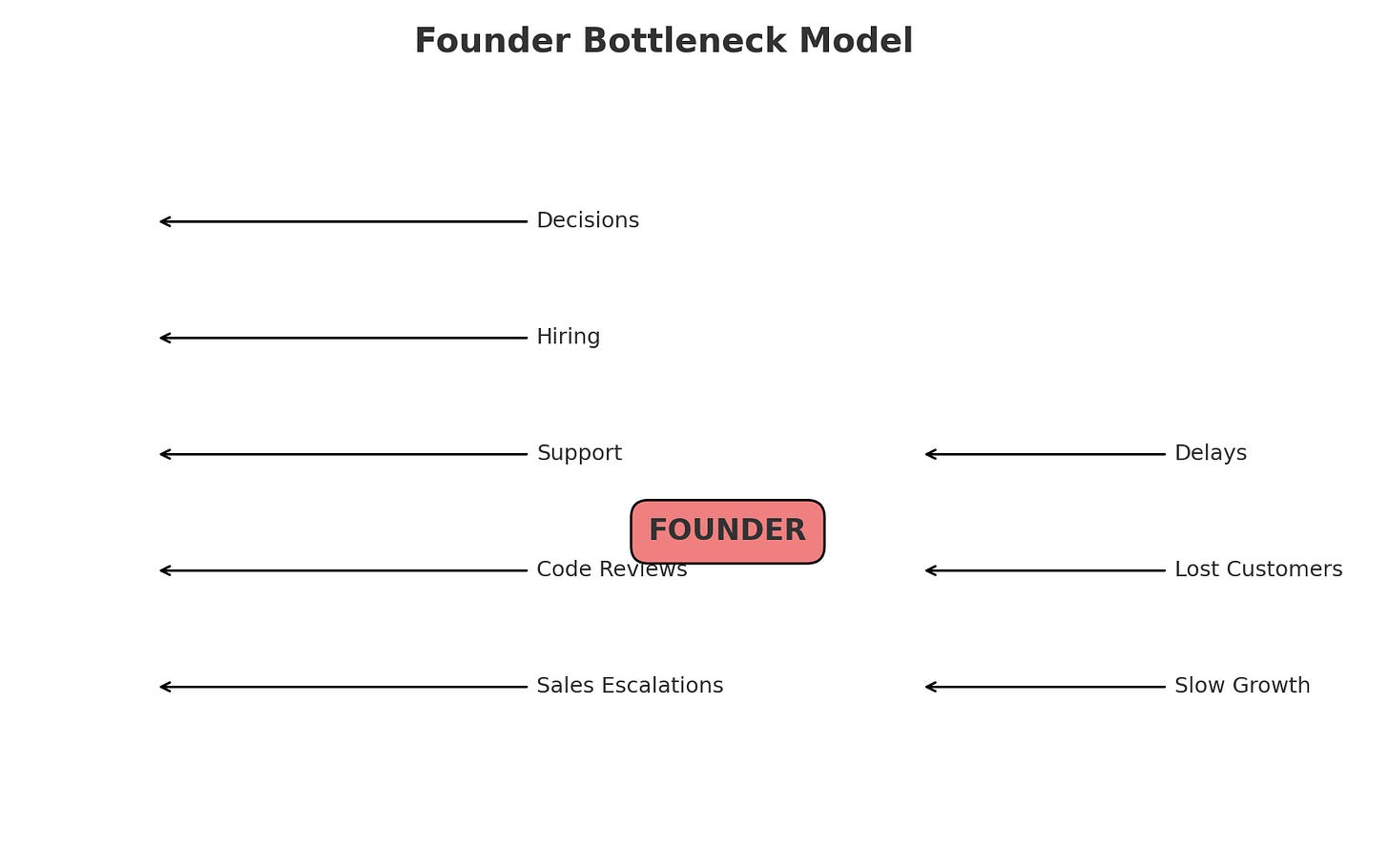
This is where founder-led companies start breaking down. Too many people to manage directly. Too many decisions to centralize. Too many contexts to keep in your head.
What breaks you here:
You schedule meetings to plan your meetings.
Every Slack thread ends with "let's sync on this."
You work weekends just to read everything that happened during the week.
Examples:
Stewart Butterfield (Slack) said scaling comms was harder than scaling product. They added “decision logs” to stop every debate from escalating to him .
Dylan Field (Figma) admitted that at ~15 people, meetings multiplied and context evaporated—he had to shift into communicator-in-chief .
Jason Fried (Basecamp) noted in Rework that past a dozen people, managing communication beats doing direct work .
Stage 3: The Hiring Panic (Months 18-30)
You finally panic-hire, but you hire people who rock at the wrong things. You bring in VP-level people when you need someone who'll actually do the work. You hire for the company you want to be, not the company you are.
Red flags you're stuck here:
New hires asking "what should I work on?" after week 3.
Expensive people doing junior work (or no work).
Culture feeling "different" in ways you can't articulate.
Examples:
Fast (the one-click checkout startup): Panic-hired senior execs without fit. Burned through $120M+, collapsed .
Quibi: Hired Hollywood executives, not scrappy operators. $1.7B gone .
Zenefits: Parker Conrad scaled headcount too fast (~1600 in 2 years), culture melted .
Stage 4: The Identity Crisis (Months 30+)
The company is bigger than you. Decisions happen without you. Your opinion is just one opinion in the room. This is either where you evolve or where you get replaced.
Red flags you're stuck here:
Feeling like you don't recognize your own company.
Board meetings where you're explaining problems, not solutions.
Secret desire to "just go back to coding."
Examples:
Twitter / Jack Dorsey (2008): Board replaced him—product visionary but not seen as scaling CEO .
Google / Larry Page (2001): Board brought in Eric Schmidt until Page matured as a leader .
Uber / Travis Kalanick (2017): Hypergrowth but cultural/legal blowups led board to oust him .
Presented by
Today’s Best Local Deals—Hand-Picked for You
Dinner for two that costs less than delivery? A full-service facial priced like a sheet mask? With Groupon, these aren’t fantasies—they’re today’s deals waiting for you to claim.
The team at Groupon scours your city every morning to uncover restaurants, salons, and activities you’ll love and negotiates savings of up to 70% so you don’t have to.
From quick lunch spots to white-tablecloth tasting menus, from barre classes to deep-tissue massages, you’ll find offers that match every mood and budget. Even better, you can stack deals: book date night now, schedule that haircut, and still have room in the budget for weekend zip-lining.
Your next “why-didn’t-we-do-this-sooner” moment is a click away. With Groupon, you can try more, stress less, and rediscover the city you thought you knew.
What Actually Works (When You Stop Lying to Yourself)
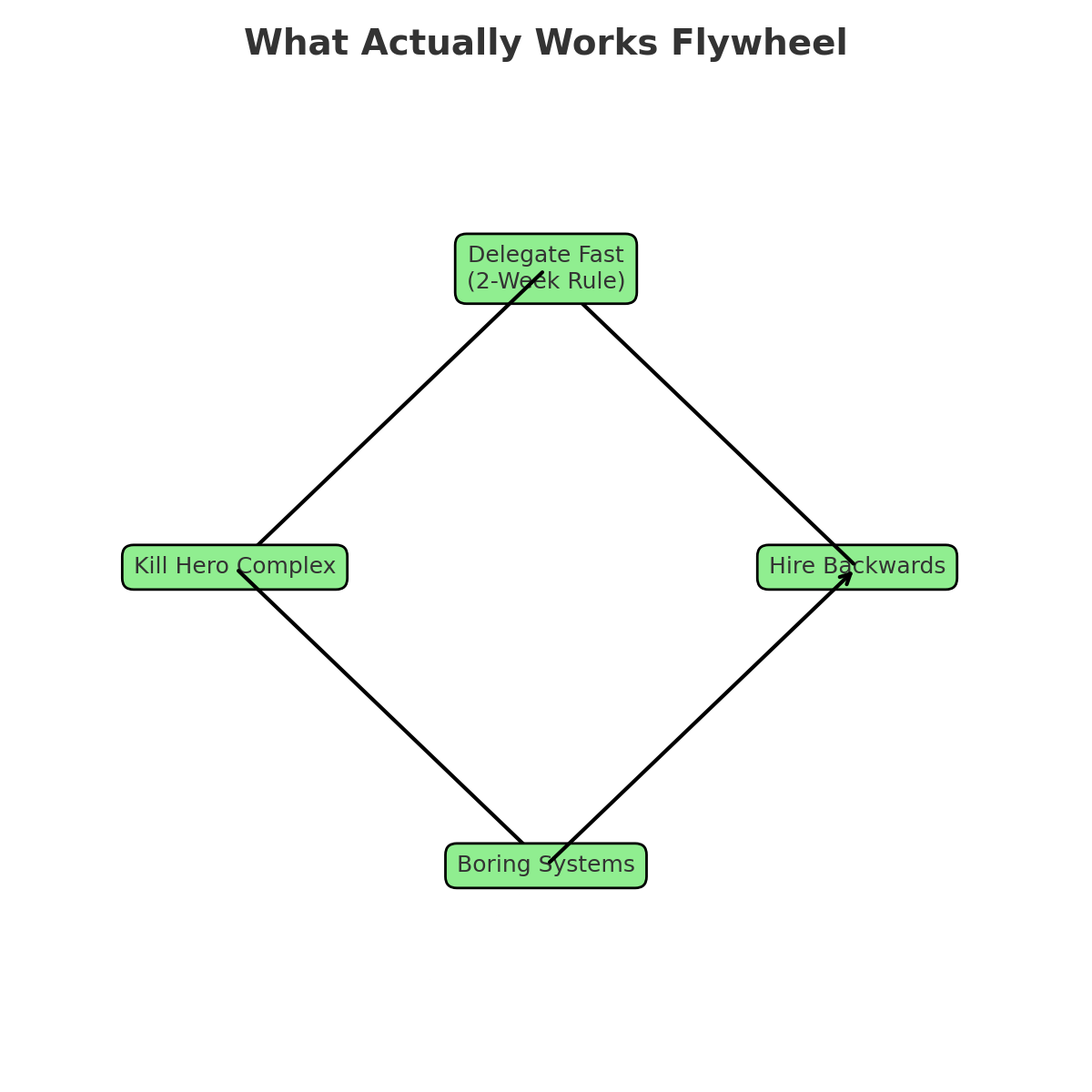
Forget the elegant frameworks. Here's what I've seen work:
1. Hire Backwards From What Sucks About You
Most founders hire people like themselves. Engineers hire engineers. Product people hire product people.
Do the opposite. Map what you're bad at, then hire there first. Can't sell? Get a salesperson before you get engineer #3. Hate operations? Find someone who gets excited about spreadsheets.
Jessica Jackley: “Deciding what not to do is as important as deciding what to do.”
Patrick Collison hired Claire Hughes Johnson from Google to run ops. Stripe scaled because she built the “boring systems” .
2. The 2-Week Rule
If you've been "meaning to delegate" something for 2 weeks, you've waited too long.
Not because delegation is hard—because the things you avoid delegating reveal what you don't trust your team with. And if you don't trust your team, you hired wrong.
Studies on startup burnout (CB Insights) show founder exhaustion and inability to scale processes as a top 5 cause of failure. Delegation is the antidote.
3. Kill the Hero Complex
You need to be more willing to delegate, hire people better than you. This isn't just advice. It's survival.
The most successful technical founders I know have one thing in common: they got excited about being the worst programmer at their own company.
Steve Jobs—“It doesn’t make sense to hire smart people and then tell them what to do. We hire smart people so they can tell us what to do.”
At Facebook, Zuck leaned heavily on Sheryl Sandberg—admitting publicly that he didn’t want to run ops. Without her, org likely would have buckled under early hyper-growth.
4. Boring Systems Beat Brilliant Insights
Innovation requires boring infrastructure. Regular 1:1s. Clear role definitions. Actual job descriptions. Performance reviews that aren’t just “you’re doing great.”
Ben Horowitz wrote in The Hard Thing About Hard Things that Ops reviews and boring systems are what keep companies alive when founders want to keep hacking.
The Real Question
Are you building a company or building a complicated job for yourself?
Because that's what this comes down to.
Companies scale through other people. Jobs scale through working more hours. If you're the bottleneck, you're not running a company—you're running an expensive consulting practice.
The alternative—becoming the bottleneck that sabotages your own business—is far worse than the discomfort of letting go.
Your Next 30 Days
Stop lying to yourself and audit honestly:
What decisions are you making that someone else could make 80% as well?
What knowledge lives only in your head that would tank the company if you disappeared tomorrow?
Who on your team is ready for more responsibility but waiting for you to get out of their way?
Then actually do something about it. Not next quarter. This month.
Because your technical skills might be timeless, but your relevance as a leader has an expiration date. And the clock is ticking.
The hardest part about growing a company isn't the technical challenges. It's admitting that the person who got you here might not be the person who gets you there.


